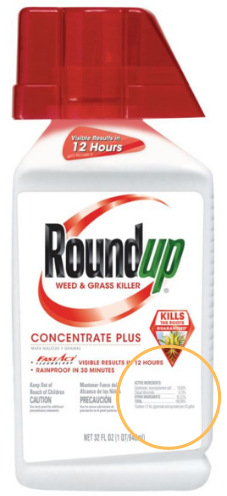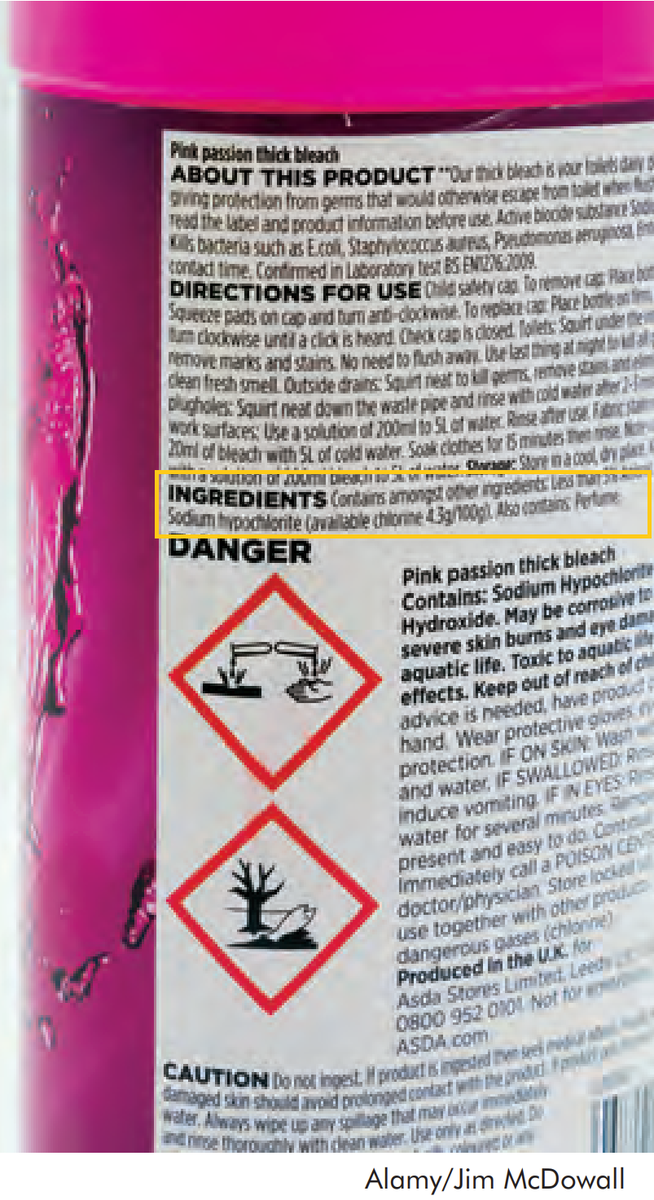Gateway on Pesticide Hazards and Safe Pest Management
How To Find Ingredients in Pesticide Products
Beyond Pesticides offers resources below to evaluate the health and ecological effects of specific chemical exposure from ACTIVE INGREDIENTS in pesticide products, as well as regulatory information and supporting scientific documents. Because various pesticide products can contain more than one active ingredient, it is important to READ the LABEL to determine chemical components.
With 192 different active ingredients and counting, it is essential to establish the connection between the use of these chemicals and their respective hazards.
View the step-by-step guide on how to search for the active ingredient(s) in pesticide products below:
- Go to U.S. EPA's Pesticide Product and Label System and enter the product name. The generic product name may vary.
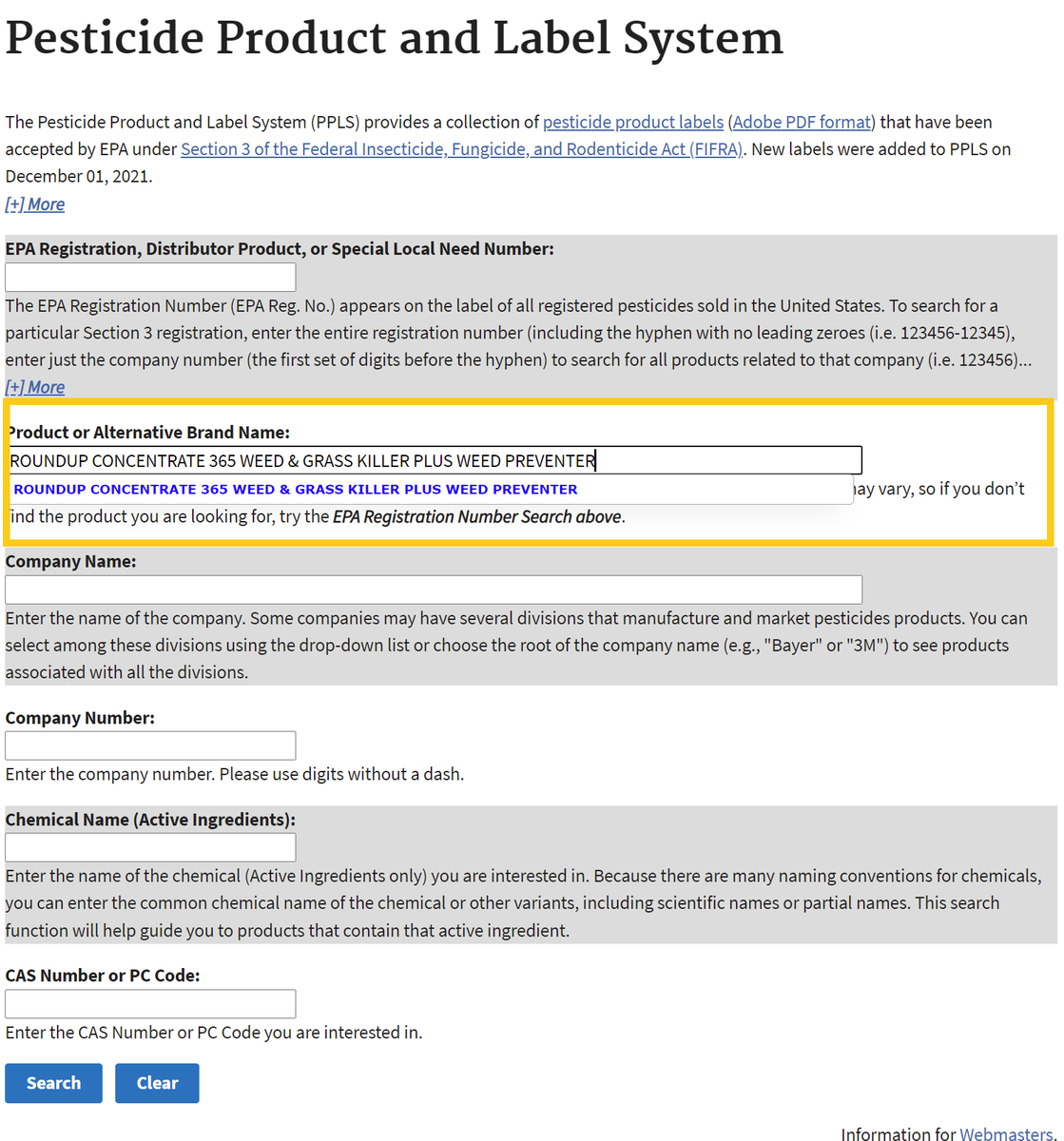
- After searching, click on the chemical ingredients tab or the link for the most recent label to find Active Ingredients.
Chemical List Label List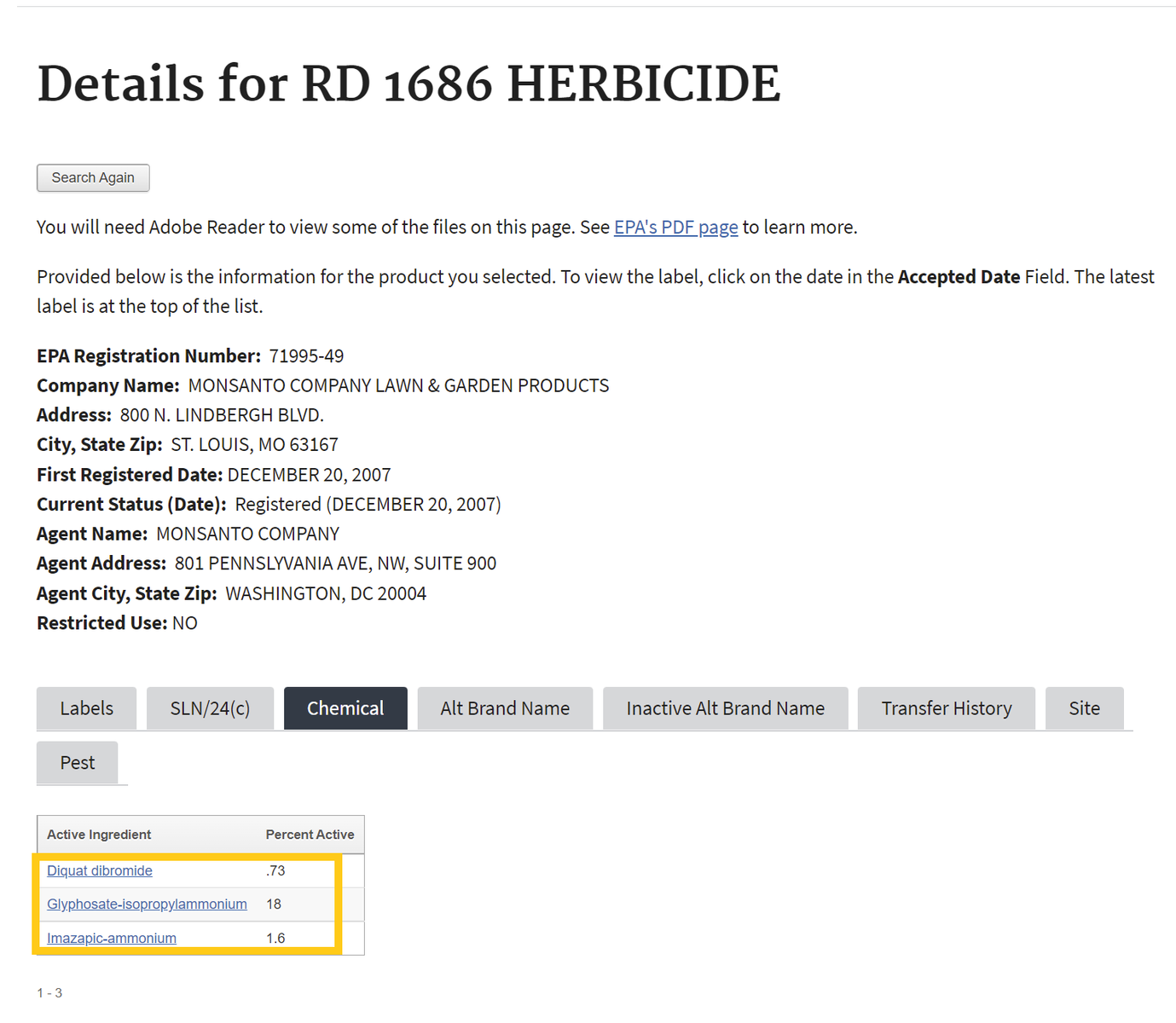
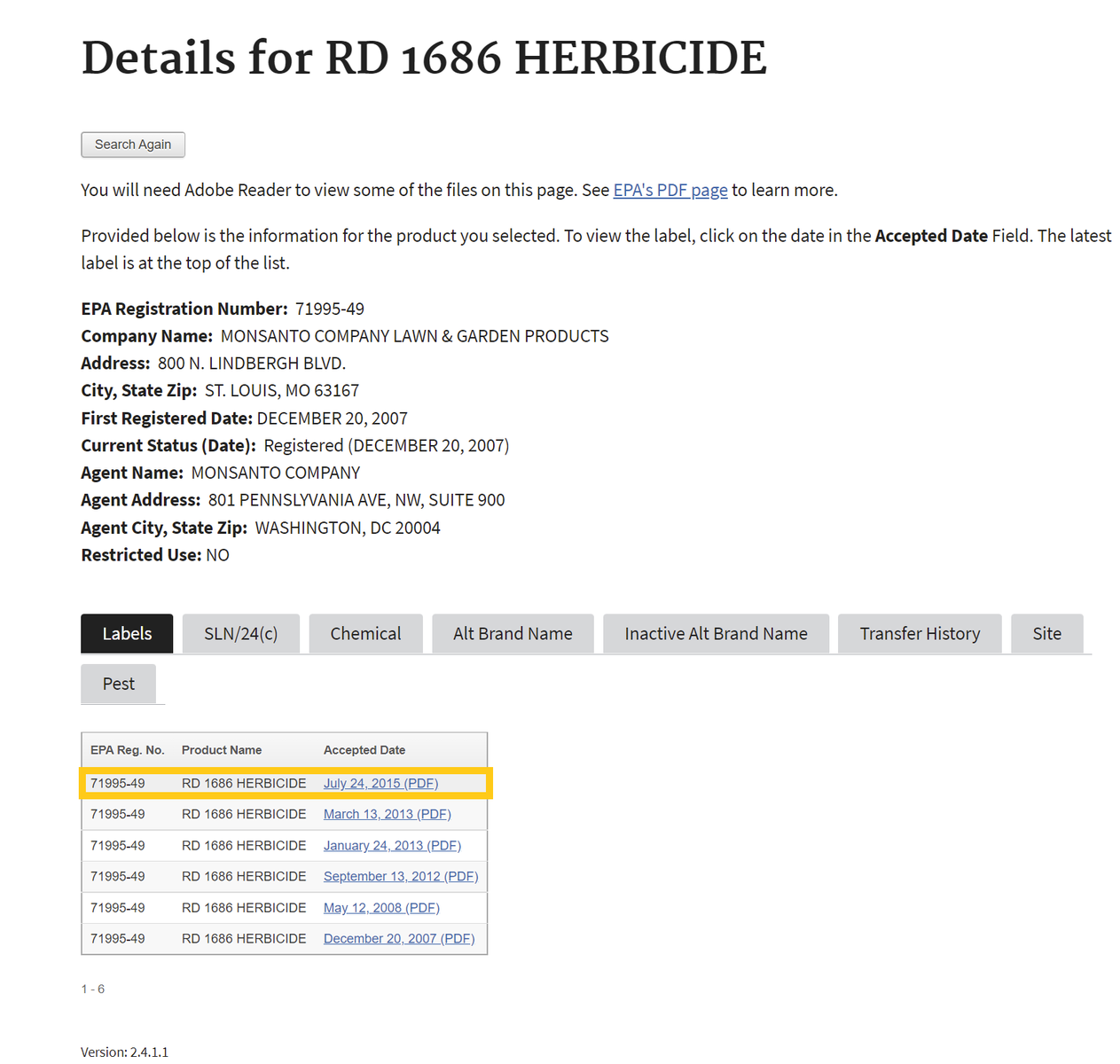
If one selects the chemical ingredients tab, skip to Step 4 . If not, proceed to step number 3 - To find the active ingredient(s) on the label, search for the page in the document containing the date of registration. Usually, the active ingredients section occurs within the first few pages of the label document.
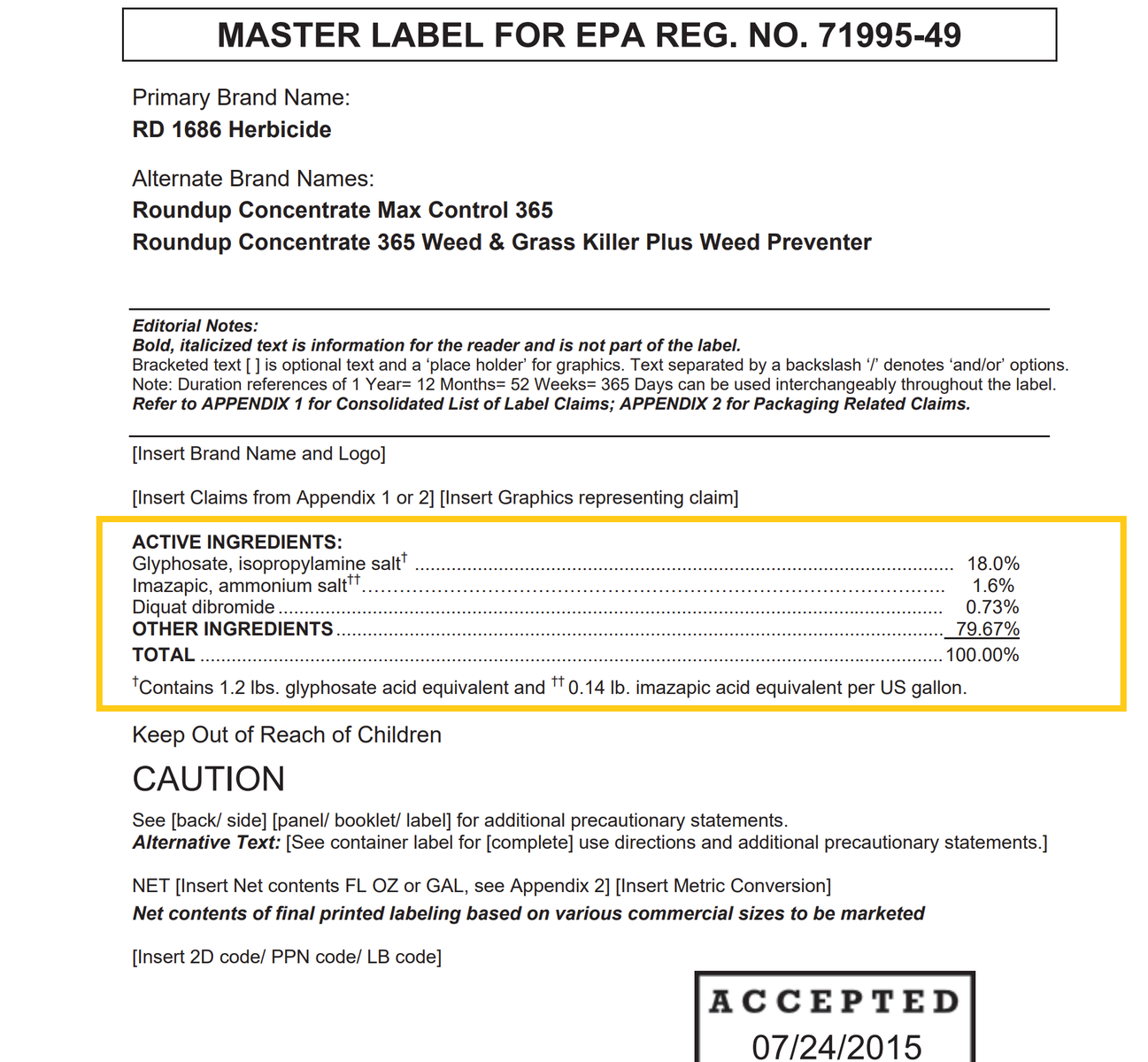
- Return to the Beyond Pesticides Gateway and search for the active ingredient name in the yellow box to the right or from the list below.
Propiconazole
General Information
- Product Names:
- Chemical Class: Azole
- Uses: Controls bacteria, fungi, viruses, also used as a wood preservative
- Alternatives: Organic agriculture
- Beyond Pesticides rating: Toxic
Health and Environmental Effects
- Cancer: Possibly (8)
- Endocrine Disruption: No
- Reproductive Effects: No
- Neurotoxicity: No
- Kidney/Liver Damage: Yes (8)
- Sensitizer/ Irritant: No
- Birth/Developmental: No
- Detected in Groundwater: Not documented
- Potential Leacher: Not documented
- Toxic to Birds: Not documented
- Toxic to Fish/Aquatic Organisms: Yes (8)
- Toxic to Bees: Not documented
Residential Uses as Found in the ManageSafe™ Database
Additional Information
- Regulatory Status:
- EPA Reregistration Eligibility Decision (revised 07/2006)
- Supporting information:
- Studies:
- Chronic exposure to the fungicide propiconazole: Behavioral and reproductive evaluation of F1 and F2 generations of male rats.. Vieira ML, Costa NO, Pereira MRF, et al. 2017. Toxicology. 389:85-93.
- Mammary Gland Development in Male Rats Perinatally Exposed to Propiconazole, Glyphosate, or their Mixture. . Gomez, A.L., Altamirano, G.A., Alcaraz, M.R., Montemurro, M., Schierano-Marotti, G., Oddi, S.L., Culzoni, M.J., Muñoz-de-Toro, M., Bosquiazzo, V.L. and Kass, L., 2023. Environmental Toxicology and Pharmacology, p.104184.
- Thyroid under Attack: The Adverse Impact of Plasticizers, Pesticides, and PFASs on Thyroid Function. Rodrigues, V.G. et al. (2024) Thyroid under Attack: The Adverse Impact of Plasticizers, Pesticides, and PFASs on Thyroid Function, Endocrines. Available at: https://www.mdpi.com/2673-396X/5/3/32.
- Pesticides and prostate cancer incidence and mortality: An environment-wide association study. Soerensen, S. et al. (2024) Pesticides and prostate cancer incidence and mortality: An environment-wide association study, Cancer. Available at: https://acsjournals.onlinelibrary.wiley.com/doi/10.1002/cncr.35572.
- Triazole pesticides exposure impaired steroidogenesis associated to an increase in AHR and CAR expression in testis and altered sperm parameters in chicken. Serra, L., Bourdon, G., Estienne, A., Fréville, M., Ramé, C., Chevaleyre, C., Didier, P., Chahnamian, M., Ganier, P., Pinault, F., Froment, P., & Dupont, J. (2023). Triazole pesticides exposure impaired steroidogenesis associated to an increase in AHR and CAR expression in testis and altered sperm parameters in chicken. Toxicology reports, 10, 409–427. https://doi.org/10.1016/j.toxrep.2023.03.005
- Cardiotoxicity and triazole pesticides: therapeutic options for a neglected heart disease. Souza, D. and Roman-Campos, D. (2025) Cardiotoxicity and triazole pesticides: therapeutic options for a neglected heart disease, Expert Review of Cardiovascular Therapy. Available at: https://www.tandfonline.com/doi/full/10.1080/14779072.2025.2476124.
- Fate of pesticide residues in beer and its by-products. Hakme, E., Kallehauge Nielsen, I., Fermina Madsen, J., Storkehave, L. M., Skjold Elmelund Pedersen, M., Schulz, B. L., … Duedahl-Olesen, L. (2023). Fate of pesticide residues in beer and its by-products. Food Additives & Contaminants: Part A, 41(1), 45–59. https://doi.org/10.1080/19440049.2023.2282557
- Combined exposure to sublethal concentrations of an insecticide and a fungicide affect feeding, ovary development and longevity in a solitary bee. Sgolastra Fabio, Arnan Xavier, Cabbri Riccardo, Isani Gloria, Medrzycki Piotr, Teper Dariusz and Bosch Jordi 2018Combined exposure to sublethal concentrations of an insecticide and a fungicide affect feeding, ovary development and longevity in a solitary beeProc. R. Soc. B.28520180887 http://doi.org/10.1098/rspb.2018.0887
- Occurrence of Current-Use Pesticides in Paired Indoor Dust, Drinking Water, and Urine Samples from the United States: Risk Prioritization and Health Implications. Xie, Y., Li, J., Salamova, A., & Zheng, G. (2025). Occurrence of Current-Use Pesticides in Paired Indoor Dust, Drinking Water, and Urine Samples from the United States: Risk Prioritization and Health Implications. Environmental science & technology, 59(25), 12507–12519. https://doi.org/10.1021/acs.est.5c00961
- Chronic oral lethal and sub-lethal toxicities of different binary mixtures of pesticides and contaminants in bees (Apis mellifera, Osmia bicornis and Bombus terrestris). Spurgeon, David & Hesketh, Helen & Lahive, Elma & Svendsen, Claus & Baas, Jan & Robinson, Alex & Horton, Alice & Heard, Matthew. (2016). Chronic oral lethal and sub‐lethal toxicities of different binary mixtures of pesticides and contaminants in bees (Apis mellifera, Osmia bicornis and Bombus terrestris). EFSA Supporting Publications. 13. 10.2903/sp.efsa.2016.EN-1076.
- Occurrence and ecological risk of typical pesticides in a river–lake system. Qin, Y. et al. (2025) Occurrence and ecological risk of typical pesticides in a river–lake system, Water Science and Engineering. Available at: https://www.sciencedirect.com/science/article/pii/S1674237025000833.
- Combined pesticide pollution enhances the dissemination of the phage-encoded antibiotic resistome in the soil under nitrogen deposition. Shen, Luo-Qin et al. “Combined pesticide pollution enhances the dissemination of the phage-encoded antibiotic resistome in the soil under nitrogen deposition.” Proceedings of the National Academy of Sciences of the United States of America vol. 122,40 (2025): e2516722122. doi:10.1073/pnas.2516722122








.png)
